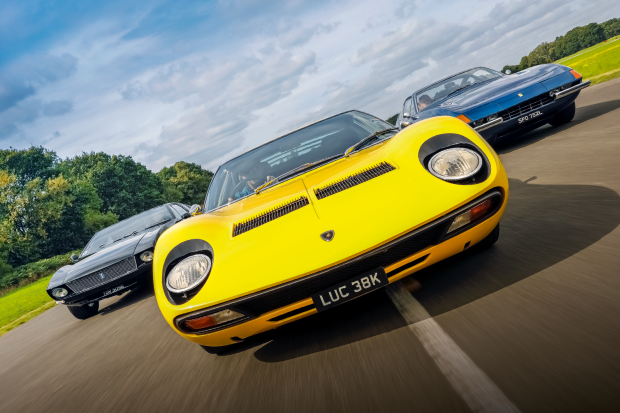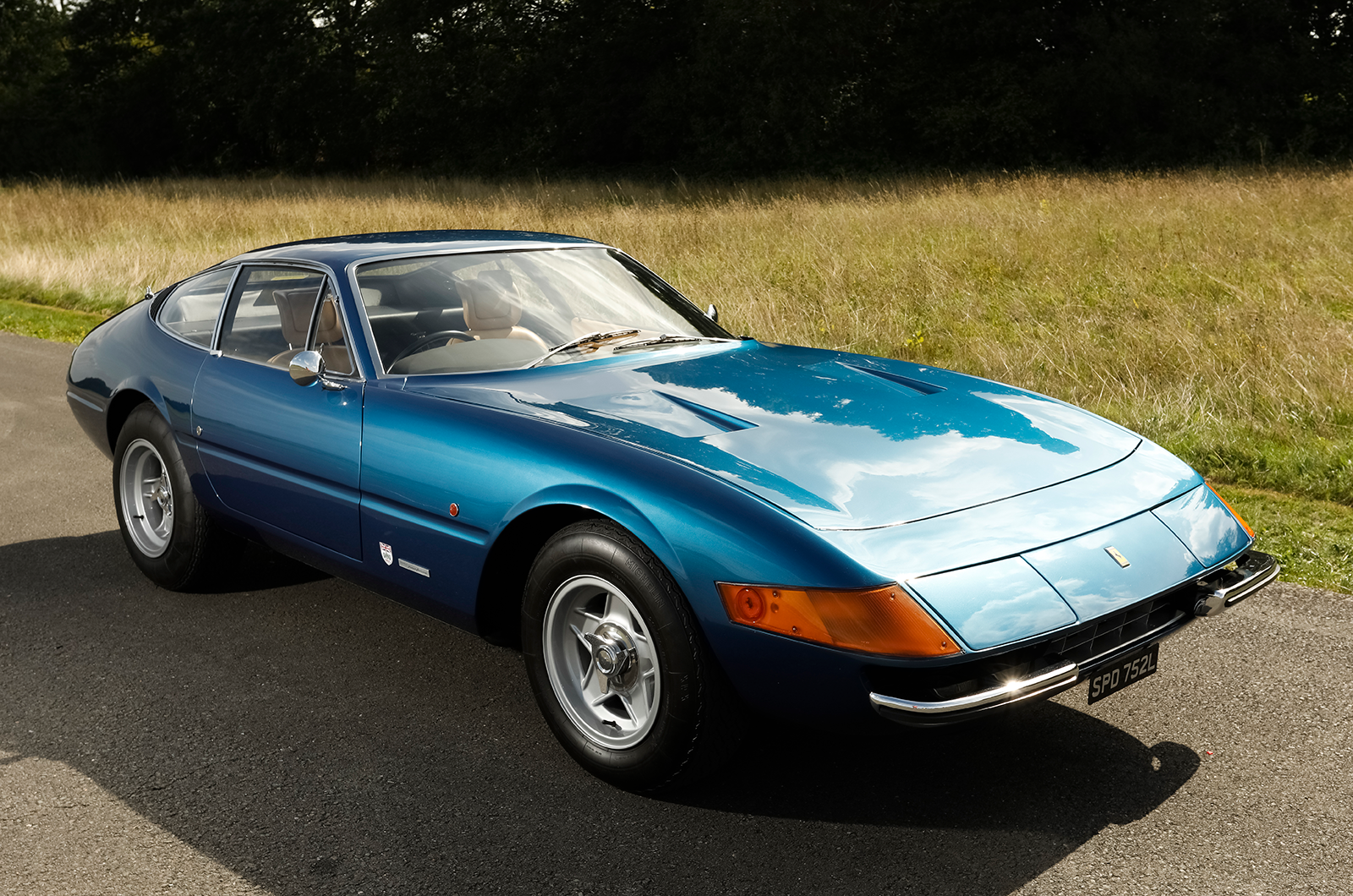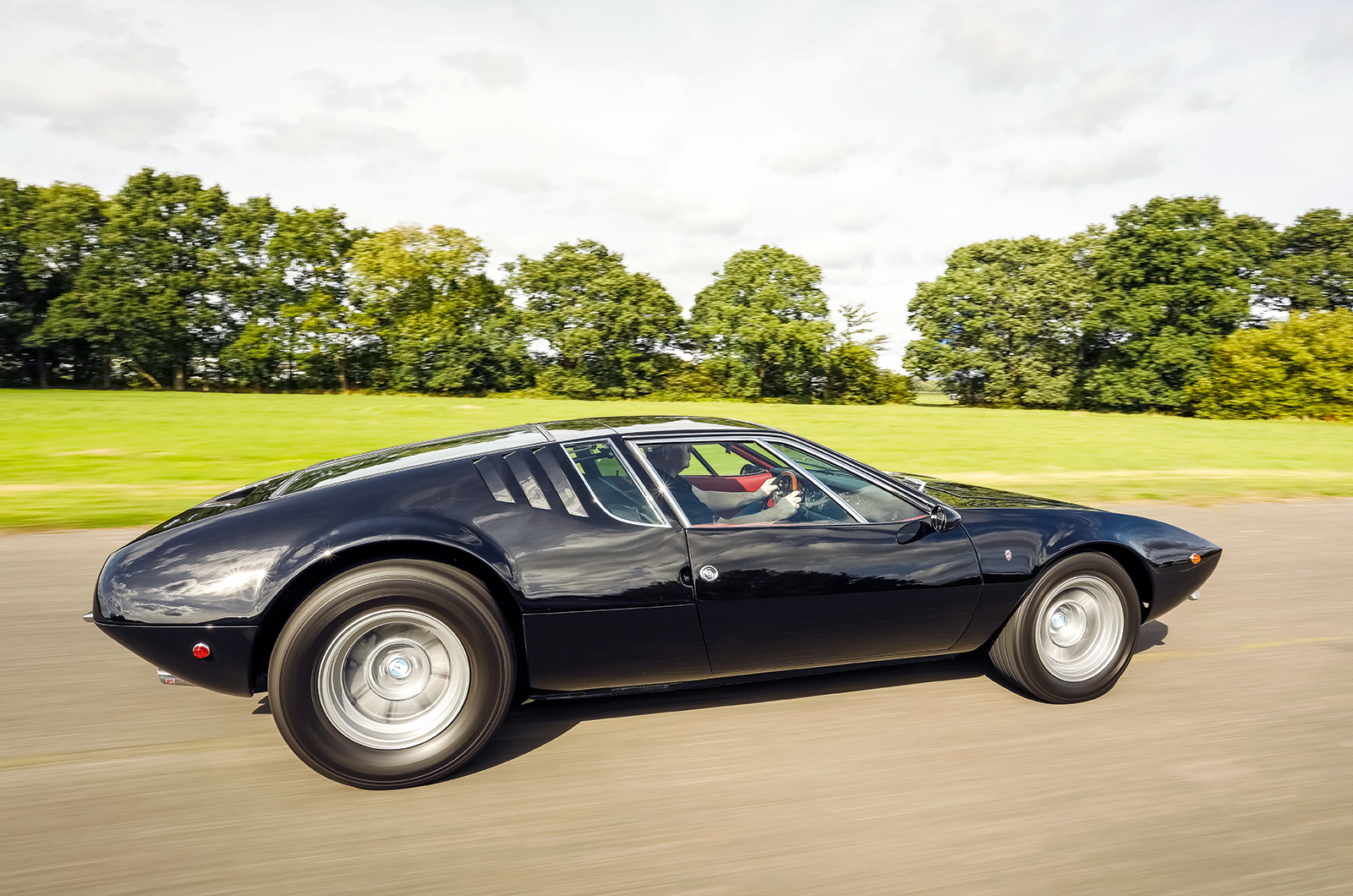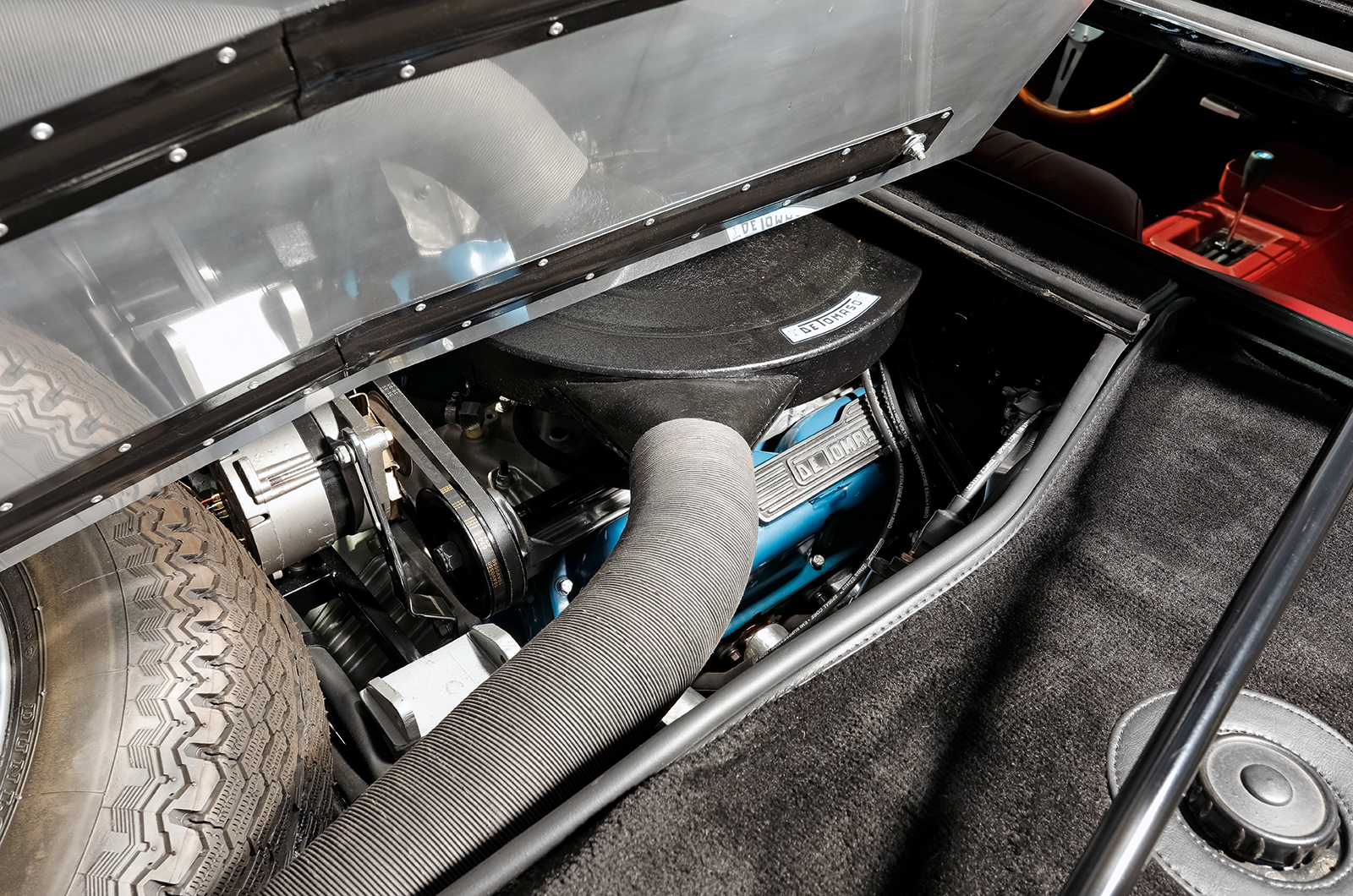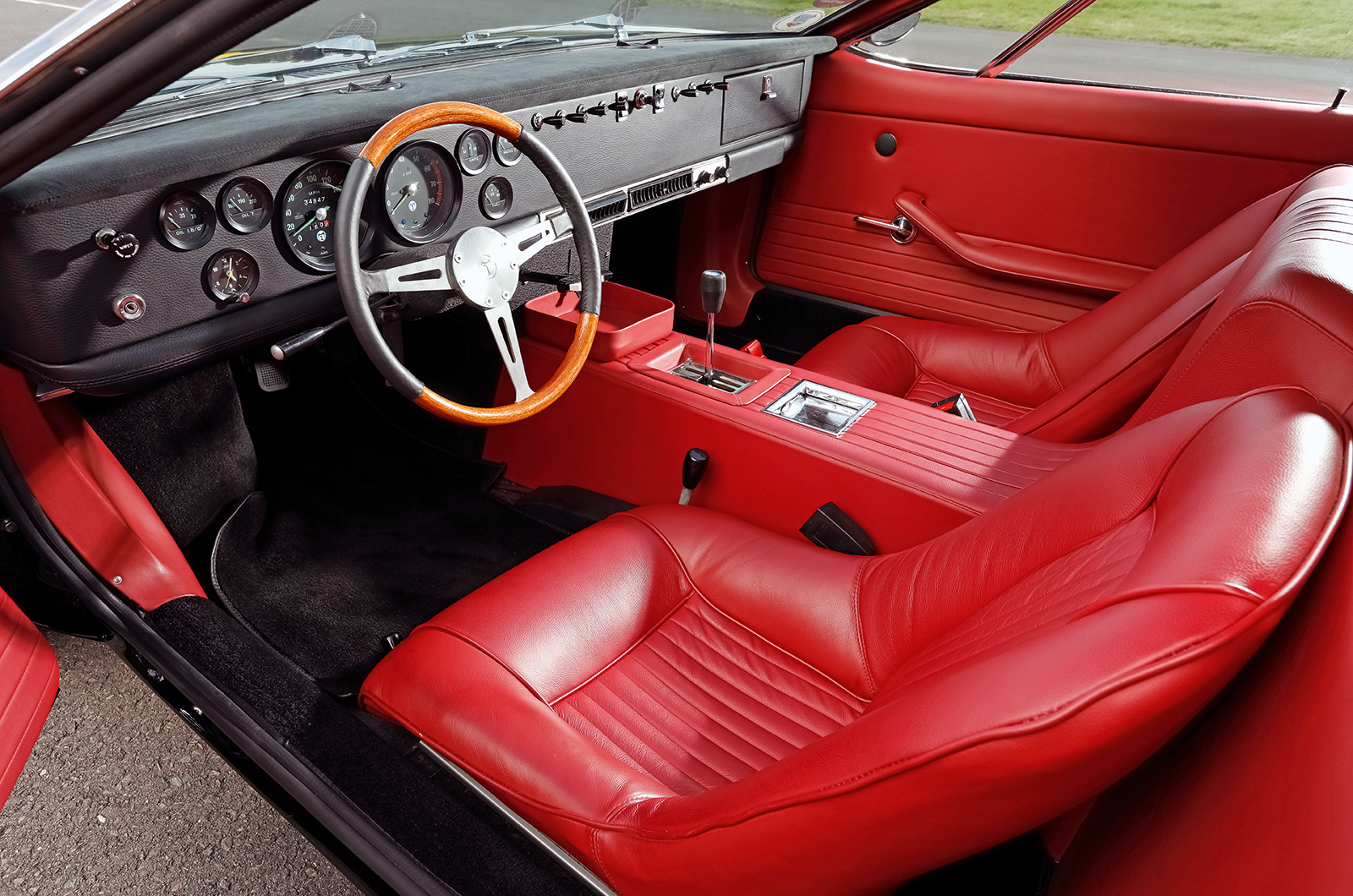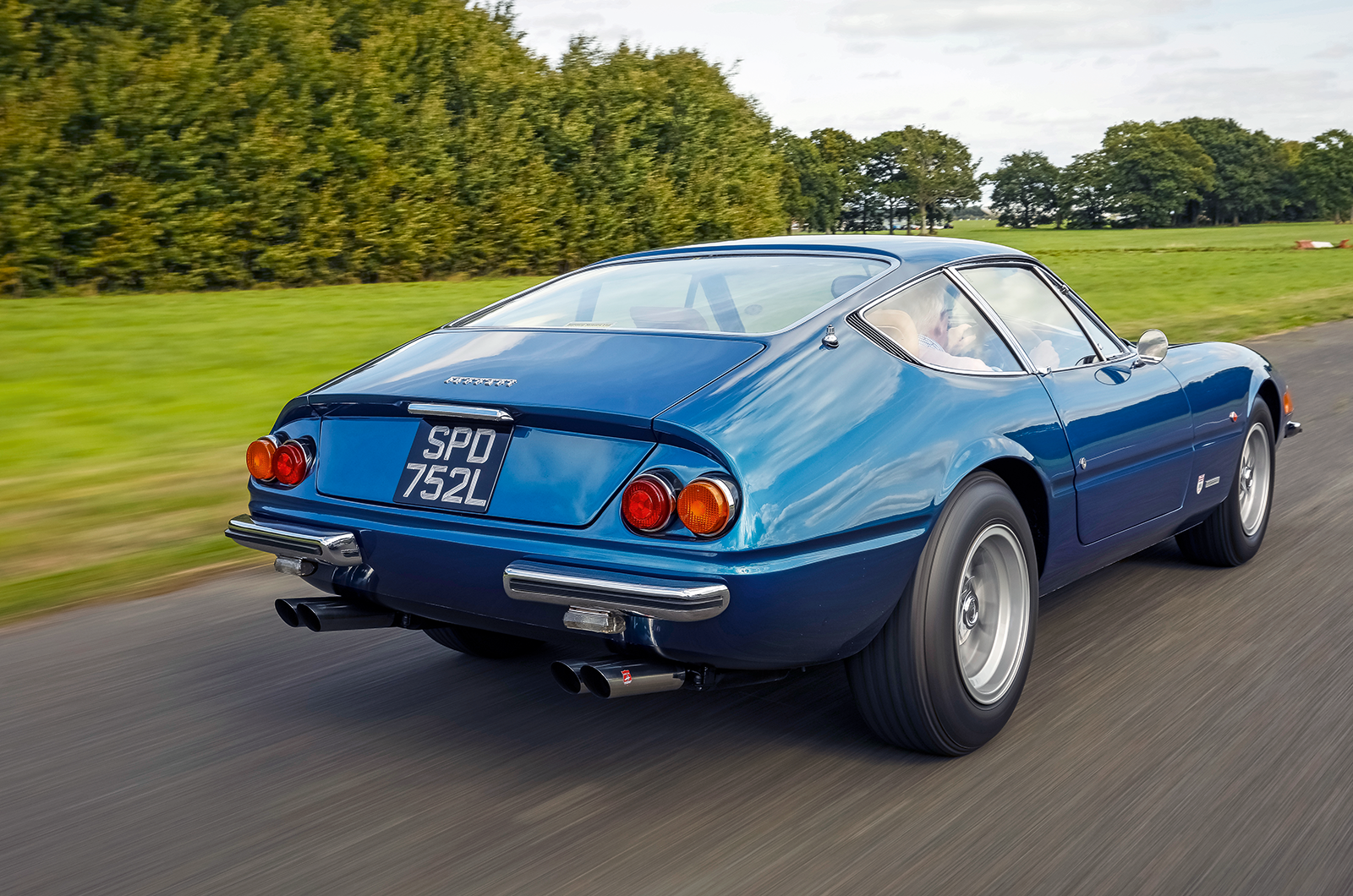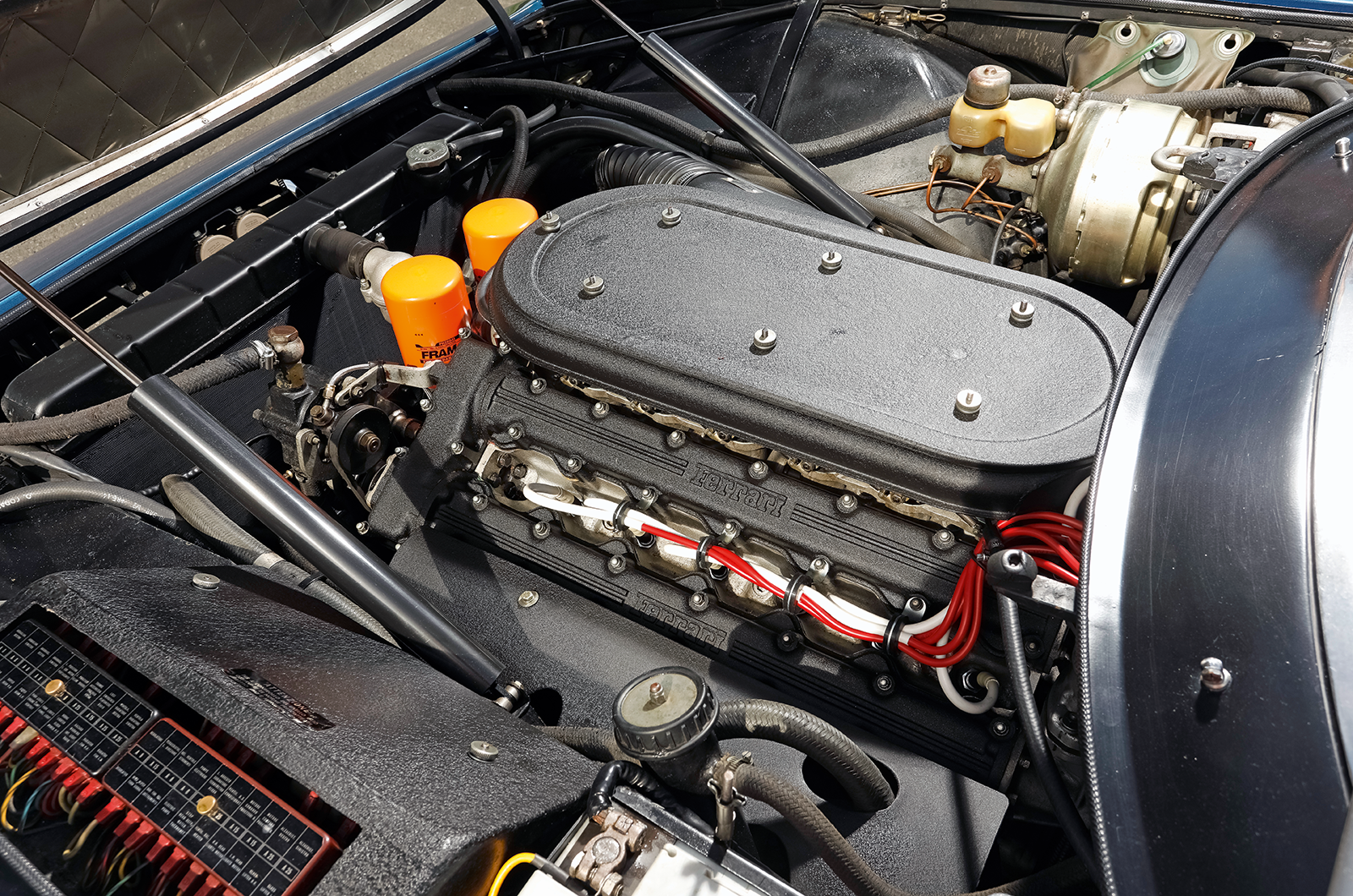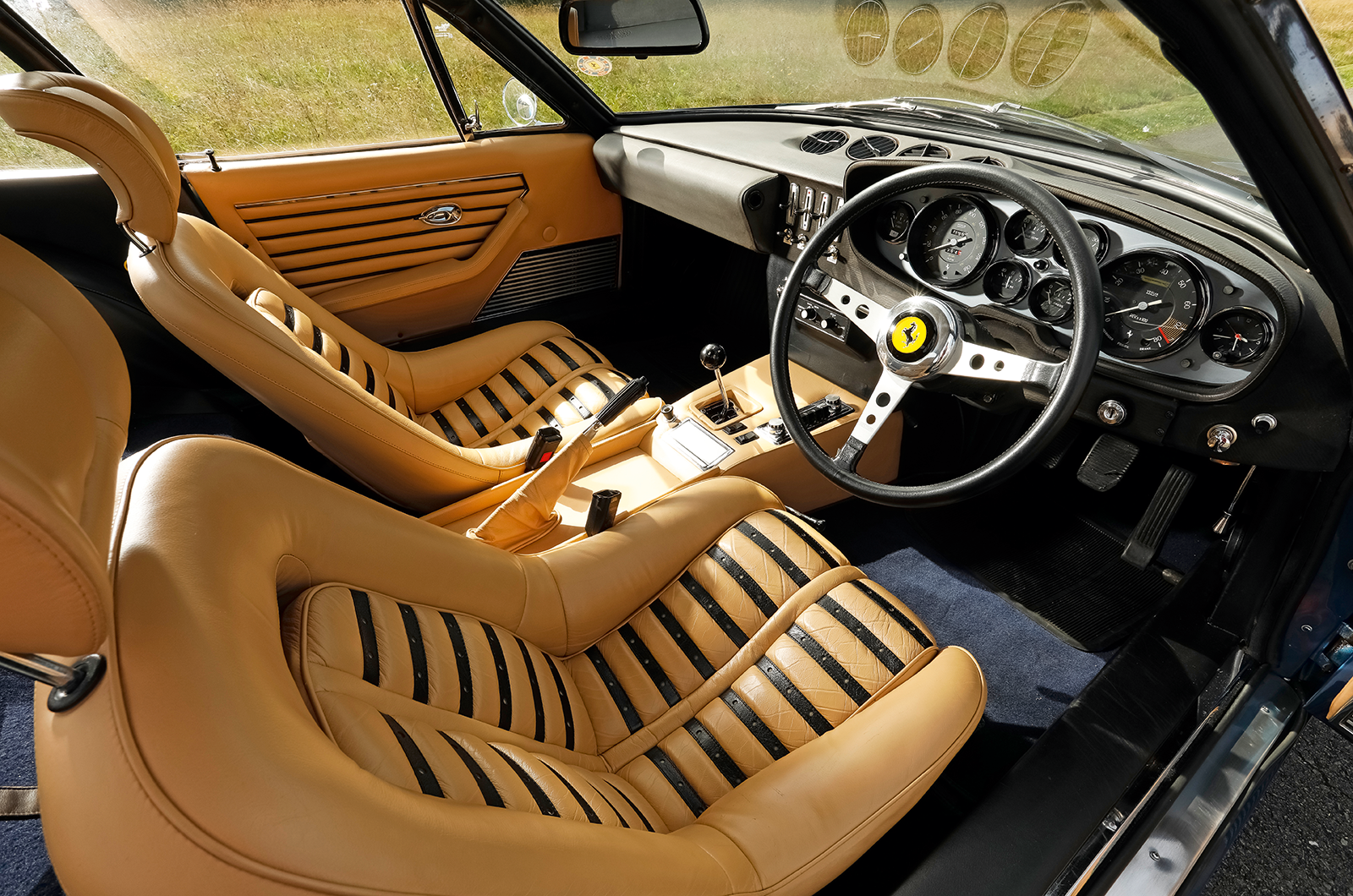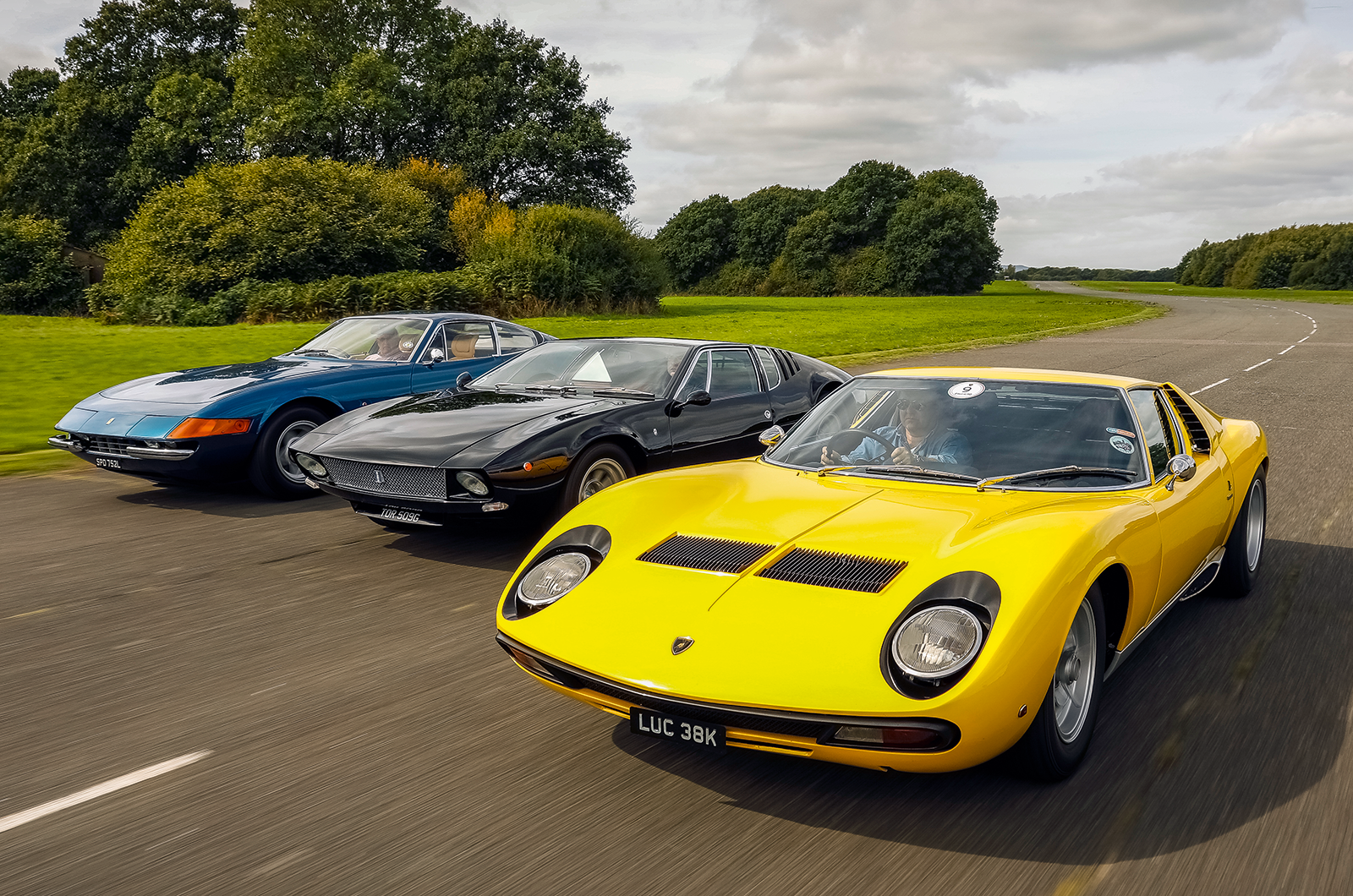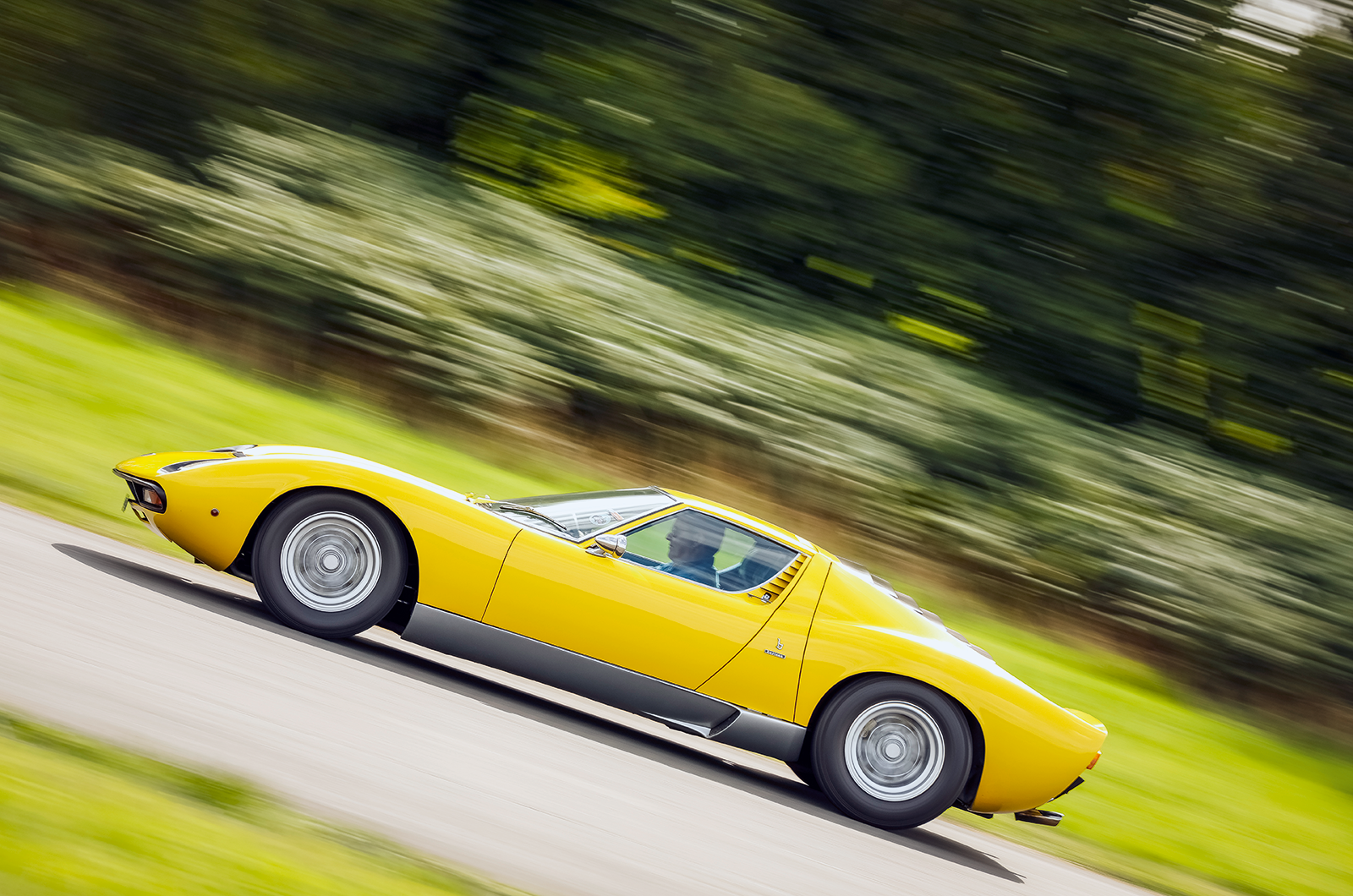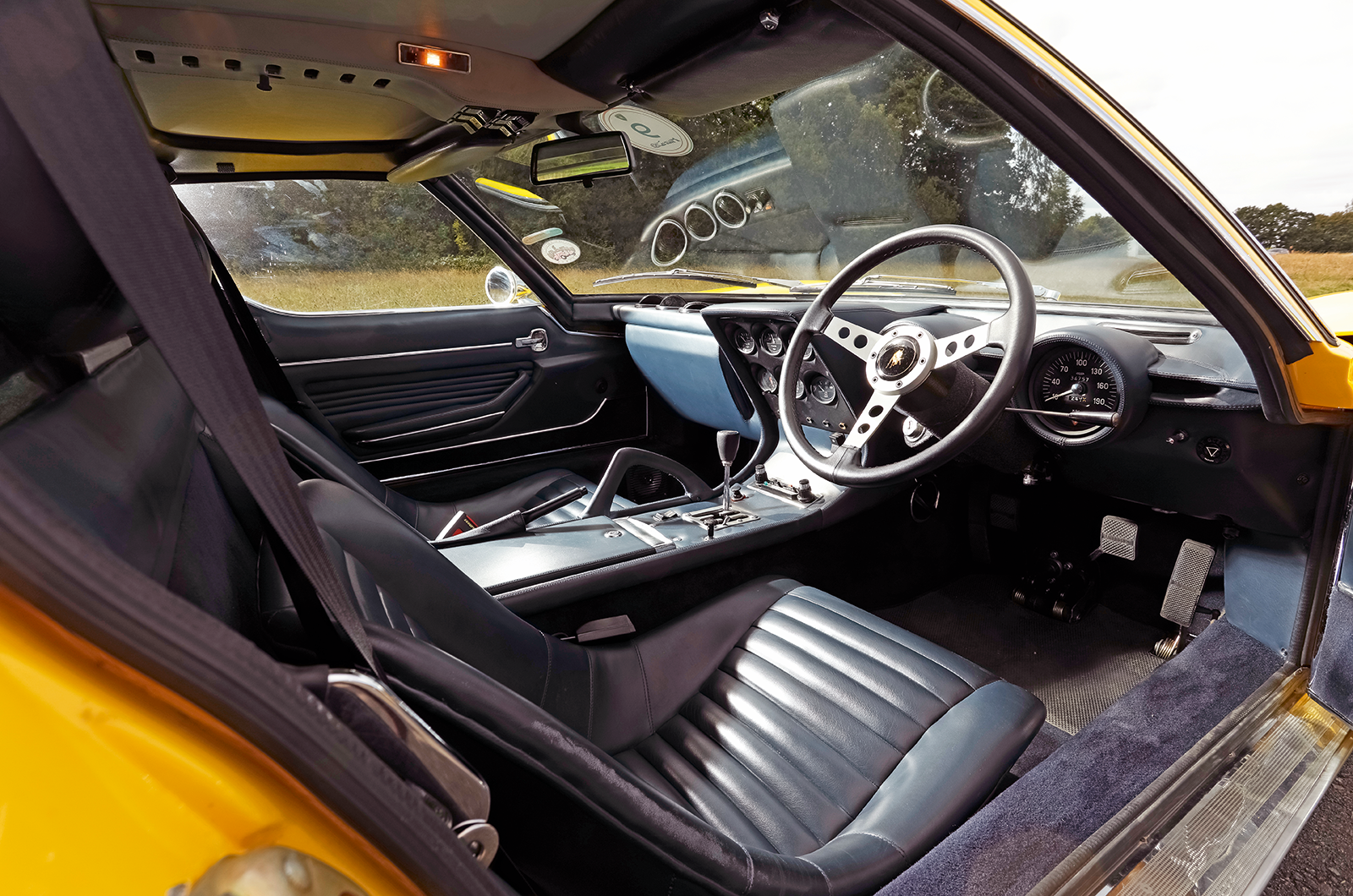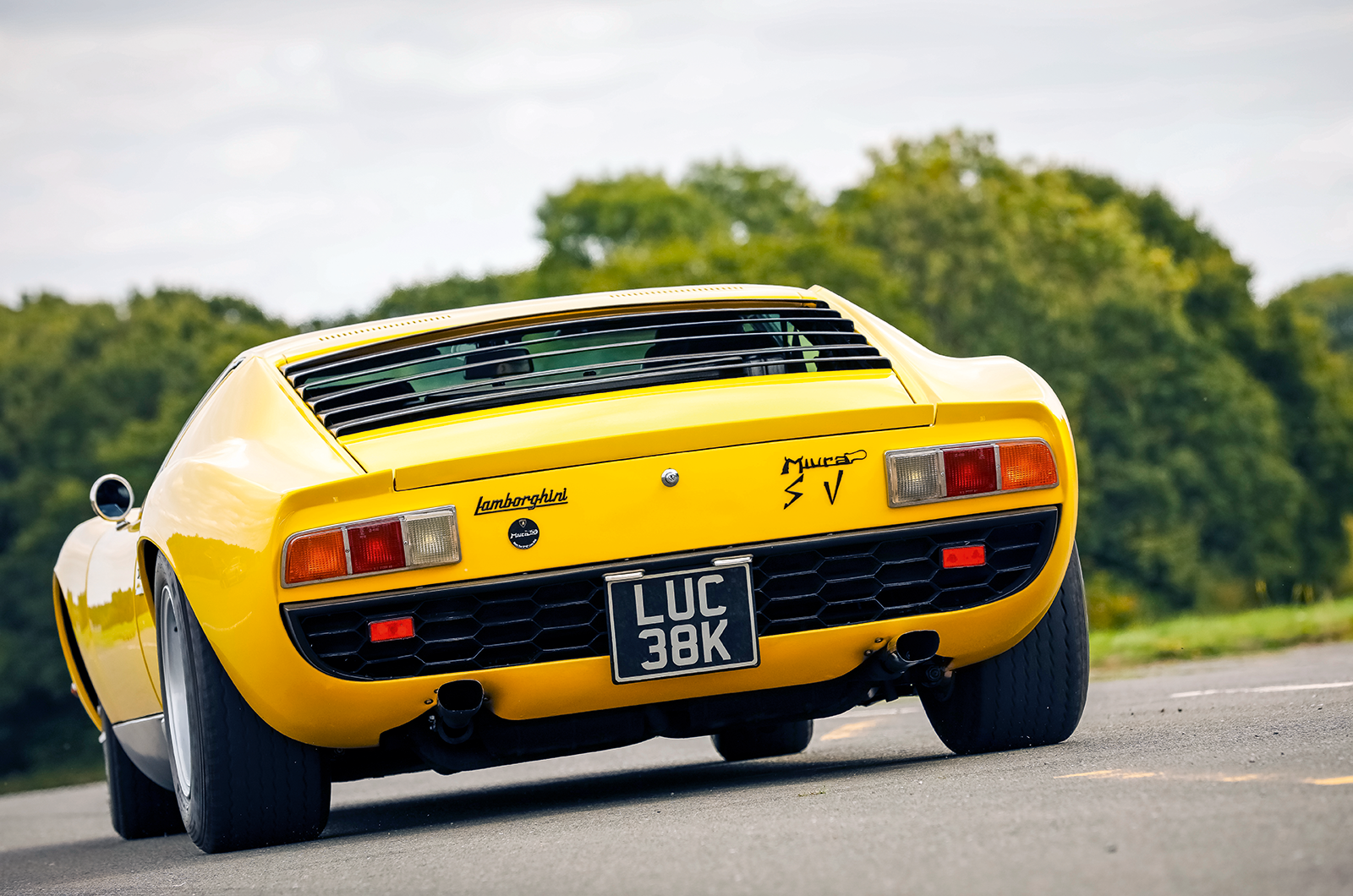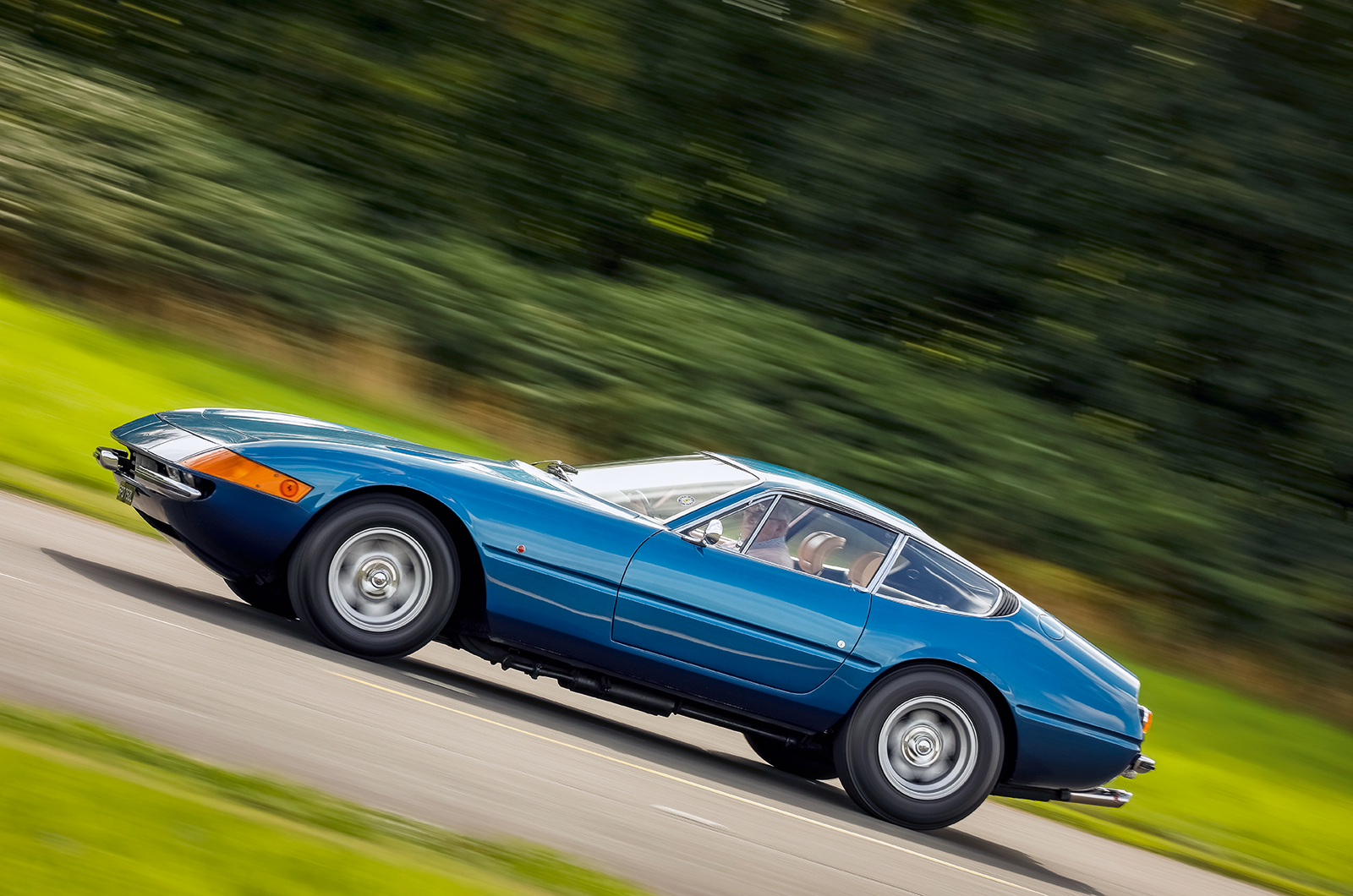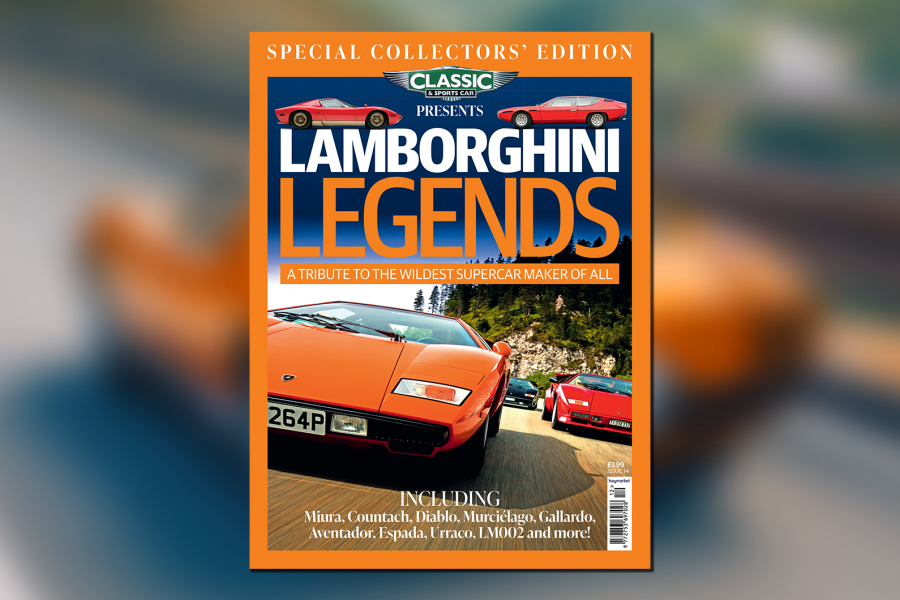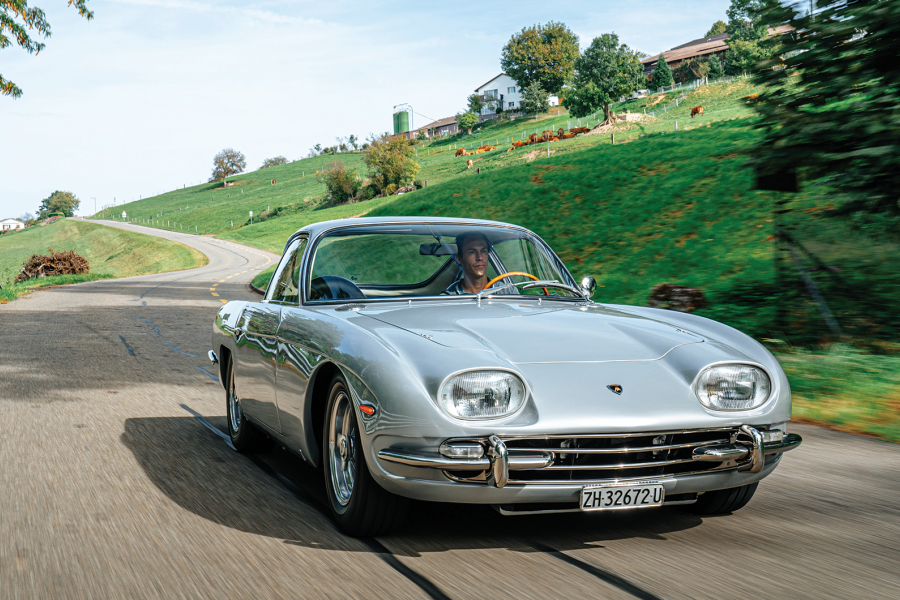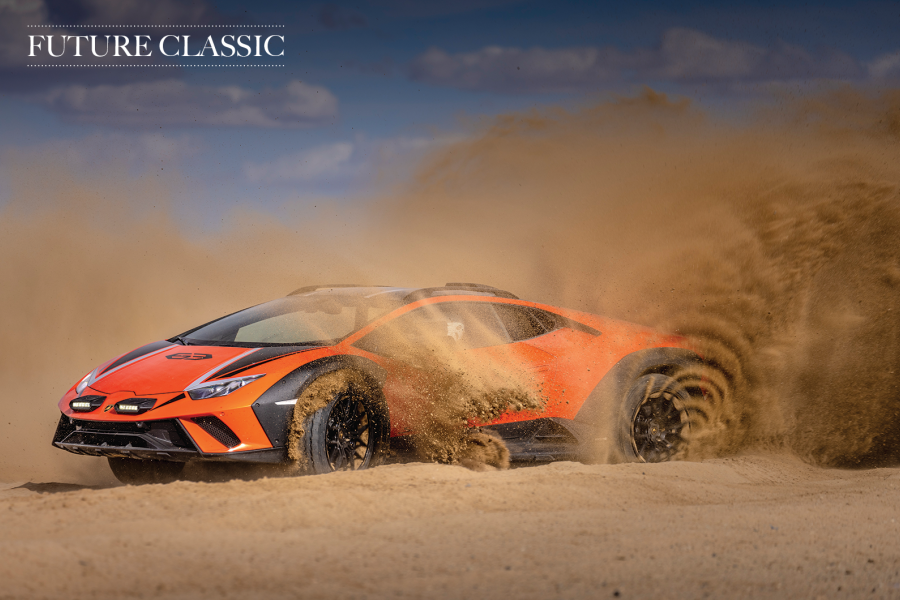In the Lambo, the tachometer surges towards 7000rpm, the hum of its 800rpm tickover rising to a crescendo of valve, camshaft and timing-chain noise that dominates your world. Serious effort is asked of you by the pedals, and you tend to slip the clutch when pulling away in the long first – a small price to pay for the race-car-responsive pick-up. On the other hand, the brakes are curiously soggy and you feel the need to glance down at the gearlever to manipulate it through the chrome-fingered gate: the Mangusta’s ZF shift is superbly slick in comparison.
The ratios in both are perfectly judged to keep the acceleration flowing. The Mangusta is not bothered which gear it’s in, and will run down to almost nothing in top then give smooth pull on a wide throttle. The Lambo is not so tolerant and, although flexible, demands care to get the gears home at the right moment because the revs shut down so quickly. Get it right and the way the Miura winds itself out will never fail to amuse.
From inside, its Barbarella-style dashboard, with bold speedo and rev-counter nacelles, seems to float between the curves of the bright yellow bonnet beyond as you the reel in the road. You feel as if your legs are stuck out among the suspension components in a giant go-kart, the outstanding feature of which – engine aside – is its light, sensitive steering. It manages to let you know exactly what the road surface is doing without loading up or transmitting shocks to your fingertips, so the impression is simply of a very fast and flat car with endless grip.
The Mangusta has a tail-heavy weight bias, but our example drove far better than we expected
On our brief drive this Mangusta felt so good, so capable that I questioned how standard it really is. Yes, its steering is low-geared and less responsive than the Miura’s – this, combined with the tail-heavy weight bias, could be the key to its oversteering reputation, but I never got anywhere near its limit.
It doesn’t have the total ‘feel’ of the Miura, but is otherwise a delightfully fast and roll-free car that simply goes where it is bidden, happiest under throttle but apparently not unsettled by having the taps shut off, either.
The De Tomaso would be a liberating choice for those who struggle to reconcile the costs of a hardcore exotic, and I liked it without reservation.
“Anyone who loves cars secretly wants one”
As for the Miura, anyone who loves cars secretly wants one. It is a beautiful object, a thing made entirely for pleasure. Sanctioned reluctantly by Ferruccio (who was delighted to find he could sell Miuras for half as much again as the 400GT), its exquisite beauty and groundbreaking engineering put his firm on the map, without ever going near a circuit.
There was a fantasy element to this dream car that connected with people from all walks of life, and it still has the power to make grown men go weak at the knees. I totally get that – and, yes, of course I want one.
Mighty Daytona is the quickest car here as well as being practical and comfortable
Yet it is the Ferrari that has the most attraction for me.
It was not a dream car wrought in metal but a developed product from a dynasty of front-engined GTs. For each armchair critic who bemoaned the ‘old-fashioned’ configuration there were 100 buyers for a car that was likely to be the last of its kind, a car they could actually use or even race – in some cases long after production had ended.
Where the Miura and Mangusta aspired to sports-racing layouts, the Daytona – which was never built to go racing – was the only one with a decent competition history. That says a lot about the car, all of it good.
Images: Tony Baker. Thanks to Rardley Motors; Emblem Sportscars; Winchester Auto Barn and Drivers’ Club
FACTFILES
Lamborghini Miura SV
- Sold/number built 1971-’73/148 (762 all)
- Construction steel unitary, aluminium panels
- Engine all-alloy, qohc 3929cc V12, four triple-choke Weber 40IDL-3L carbs; 385bhp @ 7850rpm; 286lb ft @ 5500rpm
- Transmission five-speed manual, RWD
- Suspension wishbones, coils, telescopics, anti-roll bar f/r
- Steering rack and pinion
- Brakes vented discs
- Length 14ft 31/2in (4356mm)
- Width 5ft 11in (1803mm)
- Height 3ft 51/4in (1050mm)
- Wheelbase 8ft 21/2in (2502mm)
- Weight 2862lb (1298kg)
- 0-60mph 6.5 secs
- Top speed 172mph
- Mpg 13
- Price new £15,000
- Price now £1.5m+
Buy a Lamborghini Miura here
Ferrari 365GTB/4 ‘Daytona’
- Sold/number built 1969-’74/1285
- Construction steel tubular chassis, steel and aluminium body
- Engine all-alloy, qohc 4390cc V12, six Weber 40DCNF carbs; 352bhp @ 7500rpm; 318lb ft @ 5500rpm
- Transmission five-speed manual transaxle, RWD
- Suspension wishbones, coils, telescopics, anti-roll bar f/r
- Steering worm and nut
- Brakes vented discs, servo
- Length 14ft 6in (4420mm)
- Width 5ft 9in (1756mm)
- Height 4ft 3in (1295mm)
- Wheelbase 7ft 101/2in (2400mm)
- Weight 3527lb (1600kg)
- 0-60mph 5.4 secs
- Top speed 174mph
- Mpg 12
- Price new £9992 (’72)
- Price now £650,000+
Buy a Ferrari 365GTB4 Daytona here
De Tomaso Mangusta
- Sold/number built 1967-’72/400
- Construction steel backbone chassis, steel body with aluminium bonnet and engine cover
- Engine all-iron, ohv 4950cc V8, four-barrel carb; 230bhp @ 4500rpm; 310lb ft @ 3800rpm
- Transmission five-speed manual transaxle, RWD
- Suspension: front wishbones rear top links, lower wishbones, radius arms; anti-roll bar f/r
- Steering rack and pinion
- Brakes discs, servo
- Length 14ft 1/4in (4274mm)
- Width 6ft (1829mm)
- Height 3ft 71/4in (1099mm)
- Wheelbase 8ft 21/2in (2502mm)
- Weight 3120lb (1415kg)
- 0-60mph 6.5 secs
- Top speed 155mph
- Mpg 17
- Price new $11,500 (’69)
- Price now £250,000+
Buy a De Tomaso classic car here
READ MORE
The 50 most expensive cars ever sold at auction
Winners and losers in the 2018 classic car market
The SL that came in from the cold
25 marques that no longer exist
Martin Buckley
Senior Contributor, Classic & Sports Car
